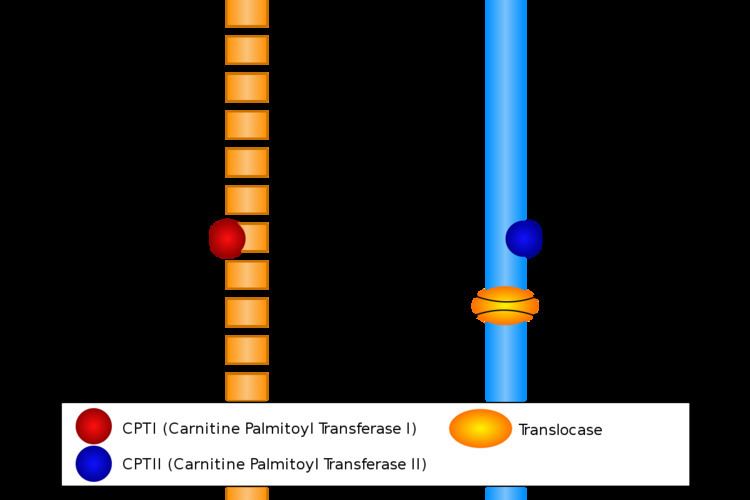Symbol SLC25A20 Entrez 788 OMIM 212138 | Alt. symbols CACT HUGO 1421 RefSeq NM_000387 | |
 | ||
Carnitine-acylcarnitine translocase is responsible for transporting both carnitine-fatty acid complexes and carnitine across the inner mitochondrial membrane.
Contents
Function
This enzyme is required since fatty acids cannot cross the mitochondrial membranes without assistance. The fatty acid is firstly bound to CoA and may cross the external mitochondrial membrane. It then exchanges the CoA for carnitine by the action of the enzyme carnitine palmitoyltransferase I. The complex then enters the mitochondrial matrix via facilitated diffusion by carnitine-acylcarnitine translocase. Here, the acyl-cartinine complex is disrupted by carnitine palmitoyltransferase II and the fatty acid rebinds to CoA. Carnitine then diffuses back across the membrane by carnitine-acylcarnitine translocase into the mitochondrial intermembrane space. This is called the carnitine shuttle system.
Clinical significance
A disorder is associated with carnitine-acylcarnitine translocase deficiency. This disorder prevents the shuttle-like action of carnitine from assisting fatty acids across the mitochondrial membrane and therefore there is decreased fatty acid catabolism. The result of this is an increased number of fat droplets within muscles and liver, decreased tolerance to long term exercise, inability to fast for more than a few hours, muscle weakness and wasting, and a strong acidic smell on the breath (due to protein breakdown).
Model organisms
Model organisms have been used in the study of SLC25A20 function. A conditional knockout mouse line called Slc25a20tm1a(EUCOMM)Wtsi was generated at the Wellcome Trust Sanger Institute. Male and female animals underwent a standardized phenotypic screen to determine the effects of deletion. Additional screens performed: - In-depth immunological phenotyping
